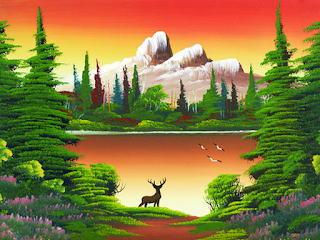 Most people, myself included, do not think of themselves as 'creative'. We are hesitant and intimidated by the process, afraid that the end results will not be 'up to the standard' of others.
Most people, myself included, do not think of themselves as 'creative'. We are hesitant and intimidated by the process, afraid that the end results will not be 'up to the standard' of others.In truth, there is no omnipotent 'art judge' who will condemn you to eternal misery if he/she does not like your work. Art is not only in the eye of the beholder but in the heart of the creator/artist.
Art is an expression of the unconscious mind, helps us to identify our thoughts and feelings. In short, it gives us an opportunity to get in touch with our inner core.
The act of creating also provides a mental refuge. It allows us to take a break from the outside world of obligations and expectations and to focus on the task at hand. It lets us explore a new dimension of ourselves and discover things that we did not imagine possible.
So, don't be afraid to try something different. Experiment with new techniques and unusual components. Put your logical mind aside and let the creative spirit flow through you. You may just surprise yourself, as I have many times.
I made the tag to the right this weekend at ScrapFest. This mini workshop has really inspired me to experiment a bit more. I would never have thought to use hot glue to leave blobs and lines, then use distress paint to make them stand out like this. It was an unexpected and interesting finishing touch. (I do need to learn to control the glue gun a bit better though.)
The heart of art is the freedom of expression it gives us and the therapeutic benefits we receive from it.



















